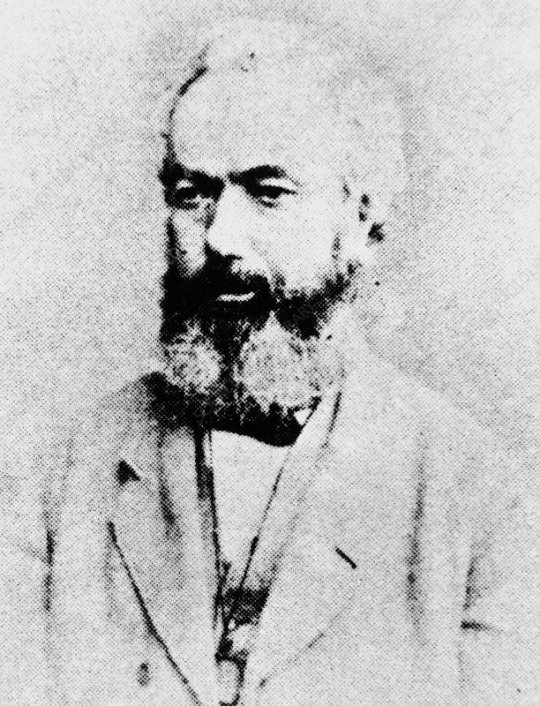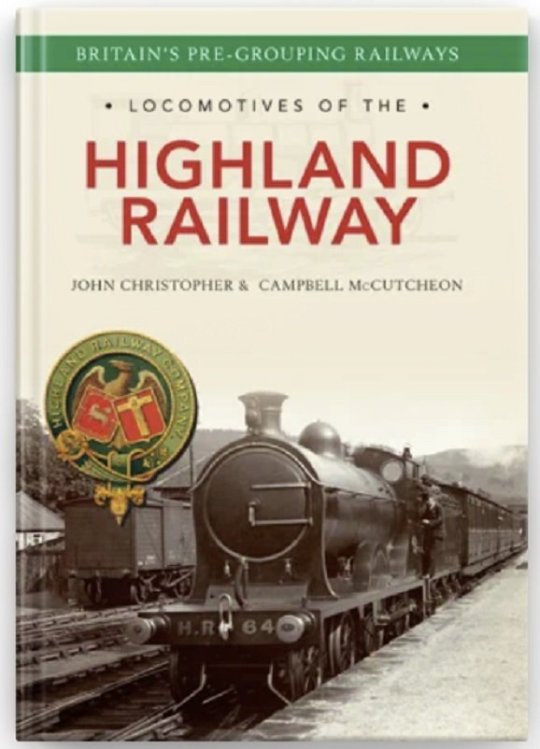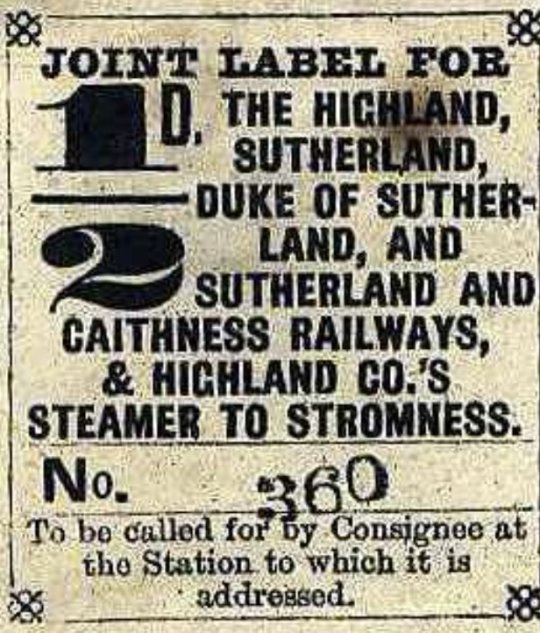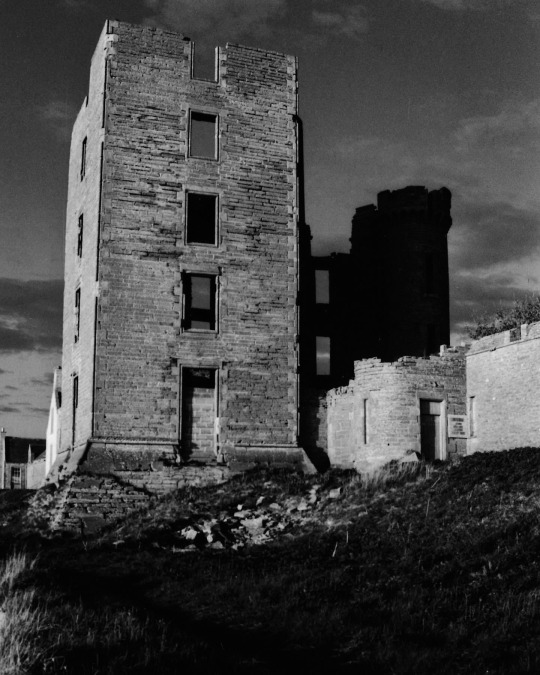#thurso
Explore tagged Tumblr posts
Text





On January 2nd 1877 Alexander Bain, the Scottish inventor died at Kirkintilloch.
Bain was one of the most prolific inventors of the 19th century, and is one of the least remembered. His inventions are all the more remarkable given his background.
"When the lecture was over, and the audience were leaving, a few gentlemen accompanied the lecturer, and conversed with him on the subjects of the lecture. There was a humble lad walking behind them, and listening attentively to what was said … he never forgot the lecture, nor the subsequent conversation.”
After nearly seven years of clockmaking apprenticeship, he left the north of Scotland, briefly for Edinburgh, and then London.
Working in London, Bain went to evening lectures and saw some impractical clocks that used static electricity to maintain the swing of the pendulum. He thought he could do better. By the middle of 1840 he had made a clock powered by electric current, as well as a ‘printing telegraph’. He also thought “to make a common clock transmit its time to other distant clocks…” In Bain’s first electric clock, the pendulum bob was an electromagnet swinging between two permanent magnets. In his ‘printing telegraph’, the character for transmission was selected by stopping a moving pointer at the correct location on a labelled disc. In the receiver, the printing type-wheel was rotated into position by a clock escapement released by an electromagnet, one tooth at a time, by the appropriate number of received electrical pulses.
Bain displayed his electric clock at the Polytechnic Institution, and with John Barwise, a chronometer maker, and they applied for a patent in October 1840. The next month, Charles Wheatstone, professor of physics at King’s College London, demonstrated an electric clock to the Royal Society, claiming to have invented it. Bain’s patent, ‘Improvements in the Application of driving power to Clocks and Time Pieces’ was granted in January 1841, and a furious public dispute ensued.
Bain’s cause was supported by many, including John Finlaison (a Treasury civil servant, and Actuary of the National Debt.) By coincidence, Finlaison hailed from Thurso, and had been impressed by a demonstration of Bain’s printing telegraph:
It wasn't only the electric clock he is famous for, he then worked on an experimental facsimile machine in 1843 to 1846/ He used a clock to synchronise the movement of two pendulums for line-by-line scanning of a message. For transmission, Bain applied metal pins arranged on a cylinder made of insulating material. An electric probe that transmitted on-off pulses then scanned the pins. The message was reproduced at the receiving station on electrochemically sensitive paper impregnated with a chemical solution similar to that developed for his chemical telegraph. In his patent description dated 27 May 1843 for “improvements in producing and regulating electric currents and improvements in timepieces, and in electric printing, and signal telegraphs,” he claimed that “a copy of any other surface composed of conducting and non-conducting materials can be taken by these means”. This was way ahead of his time!
In 1844 Bain had married Matilda Bowie, the widowed sister-in-law of his greatest champion, John Finlaison, and moved his business to Edinburgh. He and his wife had five children to add to Matilda’s daughter from her first marriage.
Bain won a contract from the Glasgow and Edinburgh Railway to construct a telegraph line along their route, 46 miles long. The price quoted was £50 per mile; Cooke and Wheatstone were charging the Great Western Railway £250 per mile. Finlaison loaned £3,000 to the project and the finished system proved the capability of time distribution, with the master electric pendulum clock in Edinburgh transmitting to a "slave" clock in Glasgow.
It wasn't all plain sailing for the intrepid Scot, he traelled to America with his "electric telegraph" plans, but Samuel Morse had already built a telegraph between Baltimore and Washington D.C so was ahead in the game. After applying for a patent Morse challenged him in the courts, saying his patents already covered what Bain had laid out, it went all the way to the suoreme courts and Morse won, although the unimplemented patent claims of Morse were rejected, this was scant comfort to Bain, who left America and had to file for bankrupcy back home, the cost of his failed venture in the Americas cost him dearly.
Bain ended up pretty much back where he started, working for a watchmaker in Glasgow, repairing clocks for a living. One of his customers was the University’s William Thomson (later Lord Kelvin) who recognised Bain’s genius and his plight. Thomson arranged a grant of £150 from the Royal Society, and successfully petitioned the Gladstone government to award Bain a Civil List pension of £80 per year.
Bain died on this day in 1877, cheated of fame and fortune by bad luck and poor choices. Aside from electric clocks and the chemical telegraph, he patented many other inventions, including a fire alarm; a marine depth sounder; a system for recording ships’ direction and speed at sea; a device for producing punched tape and a piano for playing the tape remotely; a current regulator for voltaic cells; a drinking fountain tap operated by pressing the receptacle on a lever, and perhaps too fondly, a device for drawing a measure of liquid from a container, similar to a bar optic for spirits.
Alexander Bain is buried in the Auld Aisle Cemetery, Kirkintilloch.
A Wetherspoons pub in Wick, close to where Alexander Bain served his apprenticeship, is now named after the inventor, it is also the most northerly Wetherspoons in the country. Also, as a tribute to his inventions, the main BT building in Glasgow is named Alexander Bain House.
There is also a commemorative plaque to Bain at his former workshop on Hanover Street in Edinburgh as seen in the pics.
As usual; I have slimmed this account of Bain's life down, if you want to read the full story check out this link https://www.slhf.org/sites/default/files/publications/slhf12_alexanderbain.pdf
7 notes
·
View notes
Text
Travel 2024 – North Coast 500 – Day 9 (Thurso to Lochinver)
Sunday 6th October, 2024 – Thurso, Tongue, Smoo, Durness, Balnakeil, Kylesku, Lochinver Distance driven: 126.0 milesTime at the wheel: 3 hours 22 minutesHeiland coos spotted: 1 (Finally!!!) We left Thurso and the charming Thurso Beach House Apartment with its views across the water to Orkney, to head for our next destination, Lochinver. We would be covering a lot of mileage and and awful lot…
#Balnakeil#Balnakeil Craft Village#Cafés#Cheese &039;N&039; Toasted#Cocoa Mountain#Durness#Durness Deep Time#Food#Kylesku#Lochinver#Lunches#NC500#North Coast 500#Road Trips#Sango Bay#Scotland#Smoo#Smoo Cave#Thurso#Tongue#Tongue Hotel
0 notes
Text

Old St Peter's Church, Thurso, Scotland
#120 film#bw photography#medium format#gelatin silver print#black and white#Sc#thurso#Old St Peter's Church
0 notes
Text
Neue Slideshow Nord Schottland

4 Monate Great Britain Tour mit dem Wohnmobil
Unser grösstes Fotoprojekt 2023 führte uns bis ganz in den Norden Schottlands. Wunderbare Landschaften haben wir dabei entdeckt und kleine Städtchen durchstreift. Jetzt dürfen wir unsere Slideshow Nord Schottland präsentieren. Wir freuen uns natürlich, wenn Ihr uns schreibt, ob Ihr auch schon in dieser Gegend wart 😊
Viel Spass mit der Slideshow
Herzliche Grüsse Markus und Regula Eymann Read the full article
#dieschönstenreisezieleinschottland#greatbritain#mitdemwohnmobilnachgreatbritain#nordschottland#reisefotografieschottland#schottland#thurso#thursoinschottland
0 notes
Text
The NC500: Scotland's Ultimate Road Trip
The North Coast 500 (NC500) is a 516-mile scenic route that circumnavigates the northern tip of Scotland. It is one of the most popular road trips in the UK, and for good reason. The NC500 offers stunning scenery, charming villages, and a variety of activities to enjoy. The NC500 starts and ends in Inverness, the capital of the Highlands. From Inverness, the route winds its way through the…

View On WordPress
0 notes
Text

John Thurso
#suitdaddy#suiteddaddy#suit and tie#suited grandpa#suitedman#suit daddy#suitfetish#suit bulge#daddy bear#buisness suit#suitedmen#british man#british men#member of parliament#house of lords#liberal democrats#buisnessman#Scottish man#Scottish men#John Thurso
33 notes
·
View notes
Text

John Thurso
10 notes
·
View notes
Text
me and bestie are running out of our free bus passes in autumn so we're trying to visit most of the mainland rspb reserves this summer :-) we've only done two so far but crawton was SO GOOD and we saw puffins nesting (terrible bino pics bc her sd card corrupted)



#plus guillemot eggshell for pic size#puffins are so much smaller than i realised?????? for some reason i imagined them as big but theyre really tiny#(guillemots in pictures for reference) (they are normal bird size if you imagine a bird. theyre that size)#also kittywakes are so underrated as a seabird go google them right now.theyre like if you asked someone to guess what a baby seagulls like#bears yells#im so excited heheee we're going to inverness next month and possibly up to thurso (ive never been to either) ( ^w^)
0 notes
Text

Thurso House, Conduit Head Road, Cambridge
1932
George Checkley
Image from RIBApix
108 notes
·
View notes
Text
The first week on the front had been absolutely brutal. There was a constant string of riders and fliers recorded on the death rolls they sent back to Aretia and the cadets. Mira and Syrena were busy trying their people, and themselves, off of it-- which was prooving to be a taller order than Mira had first anticipated. In a town outside of Zoyla, the second day of fighting had rendered them down two riders, a dragon, and nearly a whole drift.

Mira loosened her grip on the spike she used as Teine’s pommel when a maneuver required. She switched the grip to wipe her right palm along her flight leathers as she twisted in her seat to look over her shoulder at the beast falling from the sky behind her. A long exhale pressed from her lungs as she leaned forward in her seat patting the side of Teine’s neck as relief rushed through her aching limbs. “ That was a close one.”
“Please.” Teine scoffed, swinging his head around to, quite literally, give her side eye. His golden eyes narrowed on her as he did— clearly affronted.
“I’m just saying. I think I felt some wind from its jaws.” The wyvern had bitten close enough mira had actually checked her flight jacket wasn’t missing a strip of leather after Teine had rolled away, banking hard enough as he did it and forcing Mira deeper into her seat. Her dragon was an agile motherfucker, she’d give him that. He’d cut and rolled so hard at first he’d rendered Mira unconscious on a few occasions when she was still a cadet until she’d learned how to properly engage her muscles and breathe through the increased force.
She wasn’t going to mention that it had almost certainly been Zihnal’s hand tilting the scale in their favor when Teine had caught the thing in just the right spot on its temple with his clubtail that the wyvern fell limp almost instantly. He was good, and he was deadly with that tail, but even he wasn’t that good.
It had been a week since they escorted the cadets up the Cliffs of Dralor and it felt like Mira had been fighting for the entirety of it.
That wasn’t exactly true.
They had been attacked on patrol that first night, and then nothing after for days… until yesterday. Thurso, a town outside of Zoyla was attacked just before dawn and the fighting hadn’t really ceased. They'd evacuated maybe two hundred civilians through the fighting and drove the dark wielders back to Zoyla eventually. By the time they had finished patrols, doing what they could for the wounded civilians, and going over strategy on what to do now, Mira had gotten maybe an hour long nap when she’d been woken up by a flier. Venin had gone back to finish the rest of the town.
She’d been in long fights before. Of course she had. But there was nothing that could have prepared her for this— for seeing a venin drain the life right from the earth and fifty innocent lives right along with it like it was nothing. Worse than that– like she enjoyed it.
These things were hard to kill, and their wyvern could be easily overwhelming if they got someone isolated with numbers.
That had been exactly what happened to Panya earlier that morning.
Three against one was tough– Mira had managed to escape those odds once herself with the help of a couple fliers, but four against one had proven fatal. Especially when one of them had a rider. Of course it had. But one of the venin had engaged them while Mira took to the ground to throw her wards up in front of a pair of children that had fallen behind the group of civilians fleeing between ruined buildings.
Teine swung around back near the spot Mira had last seen Panya flying, hours ago now, toward the western edge of the town before she’d been pulled away. Her eyes scanned rapidly over the rubble for any sign of him. She’d known the moment he’d died earlier when Teine had practically wailed with grief mid-flight while he flew over her head keeping a wyvern from her and the civilians. But seeing his crumbled body still in the seat of his red scorpiontail… the crimson scales harsh and nearly violent to the eyes where he lay against the charred ground… had her stomach rolling.
“Oh, Nic. A rider till the end. I commend your soul to Malek.” She felt the rumble of Teine’s chest below her as he prepared to loose a breath of fire over them to do just that, but their moment of grief was cut short short lived when her eyes caught movement off to her left. Her eyes were drawn to it so quickly she couldn’t remember turning her head. Two wyvern had started a dive toward a pair of fliers on the ground, one knelt over the other who was clearly injured. “Teine! Ten o’clock low! ”
“I see them.”
#mira sorrengail#syrena cordella#mira/syrena#fourth wing fanfic#fourth wing spoilers#fourth wing#iron flame fanfic#iron flame spoilers#iron flame#the empyrean#Teine is a talking f-18#this is dragon top gun#I make no apologies#fight's on#Syrena is a badass#Mira is a mavrick
5 notes
·
View notes
Text





On February 1st 1865 the Highland Railway was formed from the amalgamation of Inverness and Perth Junction and the Inverness and Aberdeen Junction Railways.
Back in the day every region had it’s own local railway company covering the different areas around the country. The Highland Railway ran from Perth in Central Scotland north to Inverness and then on up the east coast to Wick and Thurso. From Dingwall, the railway ran west to Kyle of Lochalsh to serve Skye and the Western Isles. From Inverness, another line ran east to Keith, where it connected with the line to Aberdeen. Several branches were built from this core network to serve nearby towns.
This is a longer post than I normally put together but hope you get an idea of how all these wee companies ran, and ended up becoming the one company, before of course the bigger companies ate them all up. Some of the stations are now gone, but others mentioned, like Kingussie, Nairn, Keith and Dunkeld survive to this day, and I often pass through them on my travels north. It also gives us an insight intothe infamous Beeching cuts in the 60’s which butchered the rail network, if Beeching had his way there would be no railways beyond Inverness!!
Inverness was always the centre of the Highland Railway. It was the company’s headquarters and principle station. All trains led to Inverness.
The original proposals to construct railways to Inverness were made in the mid-1840s. Rival routes were proposed from Perth and Aberdeen . The Perth & Inverness Railway was considered too hilly for the locomotives of the day, but the Great North of Scotland Railway (GNSR) from Aberdeen was authorised. The GNSR struggled to raise capital in the post-railway mania period and eventually started construction as far as Huntly in 1852, opening that line in 1854.
The people of Inverness then stepped in and started building their own line from the Inverness end, initially as far as Nairn, the Inverness & Nairn Railway (I&N) was opened on 6th. November 1855 but by then plans were being made to extend this railway to meet the GNSR. After some discussion, the Inverness & Aberdeen Junction Railway (I&AJ) was promoted to build the line from Nairn to Keith where it met the GNSR extension from Huntly. The I&AJ was completed on 18th. August 1858,when it took over the working of the I&N.
The people of Inverness were never satisfied with the long journey round via Aberdeen , especially as the GNSR’s station was half a mile from that of the line from the south and connections were not always maintained. Thus was born the Inverness and Perth Junction Railway (I&PJR) which ran from Forres via Grantown, Kingussie and Drumochter summit to Dunkeld where it met with end on with the Perth and Dunkeld Railway which had opened in 1856. The I&P was authorised in 1861 and opened just two years later, being worked from the outset by the I&AJR. The two companies amalgamated on 1st. February 1865 to form the Highland Railway.
Meanwhile construction northwards from Inverness had already started, with a line to Dingwall (1862), Invergordon (1863), Bonar Bridge (1864), Golspie (1868), Helmsdale (1871) and Wick and Thurso (1874). Westward from Dingwall, the Dingwall & Skye Railway was opened to Strome Ferry in 1870.
In the 1890s, two additions were made to the main network. The direct line from Aviemore over Slochd to Inverness was completed in 1898, a year after the Skye line was extended to the present terminus at Kyle of Lochalsh. Several branches were opened from these main lines over the next 40 years, taking the final length of the system to some 242 route miles.Tourist traffic has always been a major source of income for the railways in the Highlands . The Highland Railway developed its own hotels at Inverness , Dornoch and Strathpeffer. It offered combined tours in conjunction with the steamer services of David MacBrayne. Each August it had to contend with the annual migration north for the ‘glorious twelfth.’
The railway played a major part in the First World War, when the Grand Fleet was stationed at Scapa Flow in the Orkney Islands . Worn down, like many other railways in the country, it became part of the London , Midland and Scottish Railway in 1923. The LMS continued to develop the lines, introducing dining cars and speeding up services. The Second World War again imposed a considerable strain on the lines.
On the nationalisation of the railways, the Scottish Region of British Railways took over. Soon the development of road transport made a significant impact on the use of the railway. The closure of branch lines, which had started in the 1930s, continued. The Beeching Plan of 1963 envisaged the closure of all lines north of Inverness , but this was not approved because those lines still provided a lifeline in winter. The old route from Aviemore to Forres and a number of intermediate stations on the main lines, were closed. Otherwise the main system remained intact, as it does today. Currently operated by ScotRail, the lines continue to provide a vital link to locals and bring many tourists to the area.
The Highland Railway was well known for its locomotives. Working the steep gradients of the main line, in particular, was always a challenge. Add strong winds and snow and the problems became even worse. The railway introduced the first 4-6-0s to the British Isles, commemorated in the preserved No.103 at the Glasgow Transport Museum . In the 1930s, the LMS Black 5s, locally always called “Hikers”, immediately proved their worth. The isolated nature of the country led British Railways to implement complete dieselisation early in the modernisation plan.
Today class 158 and 170 diesel multiple units work most of the trains, but you can still retire to bed in a sleeper on the line out of London Euston and wake up to the sound of a Class 67 struggling up Drumochter.
39 notes
·
View notes
Text
Travel 2024 – North Coast 500 – Day 8 (Around Thurso)
Saturday 5th October, 2024 – Thurso, Ulbster, Lybster, Wick, Duncansby Head, Dunnet Head Distance driven: 68.0 milesTime at the wheel: 1 hour 36 minutesHeiland coos spotted: 0 (Seriously? Are they hiding from us?) Saturday morning saw a latish start, partly down to my insistence on completing Thurso parkrun while I had the opportunity, what with it also being parkrun’s 20th birthday and thus…
#Cafés#Cairn o&039;Get#Castles#Food#Food and Drink#History#Lunches#Lybster#Museums#NC500#North Coast 500#Old Wick Castle#Road Trips#Scotland#Thurso#Tidelines#UK#Ulbster#Wick#Wick Heritage Centre
0 notes
Text
So, regarding my cycling/camping/wild-camping trip to Orkney. I'm currently drafting this in Brown's Hostel, Stromness... going to catch the 6:30 ferry tomorrow morning and back to bleak reality.
gonna be breaking the trip's brief account into parts due to the restraint of number of pictures i can put into each post. will post it as i write it so i can assemble a master post...
I got the idea of cycling/wild camping from a lady who did this in the hebrides in her youth which was in the 70s, 80s. Got the idea of going to Orkney from well, the lost Franklin expedition, another lady who's been going to Orkney almost every year for the past few decades or so, and being handed a card abt the orkney storytelling centre. So handed in my dissertation, moved, bought a second hand bike, strapped my gear onto it, was terrified for a bit there and didn't research much until the last minute, but thought if I didn't go then I ain't never going.
part 1
day 1
my poor bike at waverly.
I was doing a bit of an experiment, so instead of my summer sleeping bag I brought a heavy army surplus wool blanket instead. I wanted to see what it feels like to sleep in blankets. The conclusion is it's fine as long as the temperature is above 9 degrees celsius. But my insulation mattress is leaky so had to get up every three hours to reinflate it. Apart from that, with a bit of help from the sudden balmy weather that graced this part of Scotland, I was mostly warm enough.

So off I went, arriving at Thurso at 11 pm. Cycling 13 miles in the dark towards Dunnet head to see the lighthouse in action (it marks the most northerly point of mainland scotland). Exploring an abandoned seaside house on the way and seeing a dead rabbit (the next morning I saw it again, with its bowels exposed, a crow was pecking at it, which made me feel better as the energy of that rabbit is not going to be wasted). If I was a braver man and brought a better knife I would've strapped it to my bike and skinned it, but I'm too frightened of catching something from eating it.




Dunnet head lighthouse in action.
It was a surreal experience, sitting next to the lighthouse looking into its heart of diamond (the beautiful beautiful fresnel lens) projecting a slowly rotating crown composed of columns of light in total darkness. It was raining and the wind was picking up. I scrambed a bit to try and find a spot to set up camp, almost ended up in a loch (the loch, is black; the unilluminated field, is black; the night, is black; I could't see shit but the falling rain in front of the light mounted on my bike, they fell like silver needles). Camped on heather between three lochs and the sea. At least its a well drained area.

-
day 2
Before catching the ferry to st Margaret's Hope, went up to see the lighthouse in daylight. And all the beautiful cliffs & sea view that I missed in the dark.


Sheltered in a pub in St. Margaret's Hope for a few hours, then went to camp in a wilding hotspot, the Hoxa beach.

The rain just abated but the wind was 37km/hr, got some help from a couple (John and his Danish wife) so after a bit of a struggle finally set up the tent. Wonderful folks, gave me eggs and toast (and extra tent pegs for windy weather). They are from southeast Scotland, somewhere called "Gales Bay" if you translate the name into English.

(tbc)
10 notes
·
View notes
Text
okay so i was trying to figure out which two points you can drive between are farthest apart. my first guess was thurso UK to singapore (about 6k miles, so only half the hypothetical maximum), but when i put it into google maps it refused to calculate a route, through fiddling around i eventually figured out it refuses to calculate paths between india and pakistan of any sort. from what i can tell online, you COULD cross the border in a car, at wagah (and only at wagah!) but in 2019 they closed it fully and now you can only cross by foot!
anyway, if you allow for crossing at wagah thurso-singapore is about 216 hours of driving
anyway thats definitely not the real answer, you can go from capetown to omsukchan russia, which is 9700 miles. note that google refuses to calculate it directly, you have to do a chain of stops in the middle (presumably has an automatic timeout when theres too many roads to consider). i THINK omsuckchan is the easternmost point (before the date line) accessible by road but its hard to tell. once they finish the anadyr highway (well. finish and highway are both generous terms) itll be a full 10k miles! very near the maximum possible
anyway. the russian far east is a bummer. some excerpts:
Magadan, founded in 1930, was a major transit center for political prisoners during the Stalin era and the administrative center of the Dalstroy forced-labor gold-mining operation.
The Kolyma Highway is colloquially known as the Road of Bones (Russian: Дорога Костей, transliteration: Doróga Kostyéy), in reference to the hundreds of thousands of forced laborers who were interred in the pavement after dying during its construction.[1][2]
75 notes
·
View notes
Text



Plant of the Day
Friday 29 September 2023
The lettuce (Lactuca sativa) crop looked good in the help yourself community containers on the high street in Thurso, Scotland. When this annual leaf vegetable is ready to harvest they will put a heart label by the plants.
Jill Raggett
47 notes
·
View notes
Text

Thurso Castle, Scottish Highlands
#photography#architecture#urban exploration#urbex#blackandwhite photography#bnw of our world#bnw planet#black and white#bnwphotography#noir photography#architecture photography#ruins#decay#derelict#abandoned places#abandoned#forgotten places#lost places#castle#fortifications#scotland#great britain#uk#scottish highlands#scottish history#bnw#analog#film#bnw society#black and white landscapes
34 notes
·
View notes